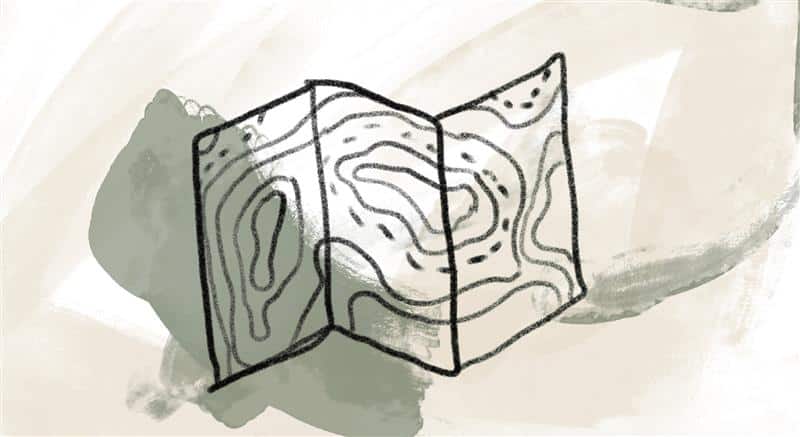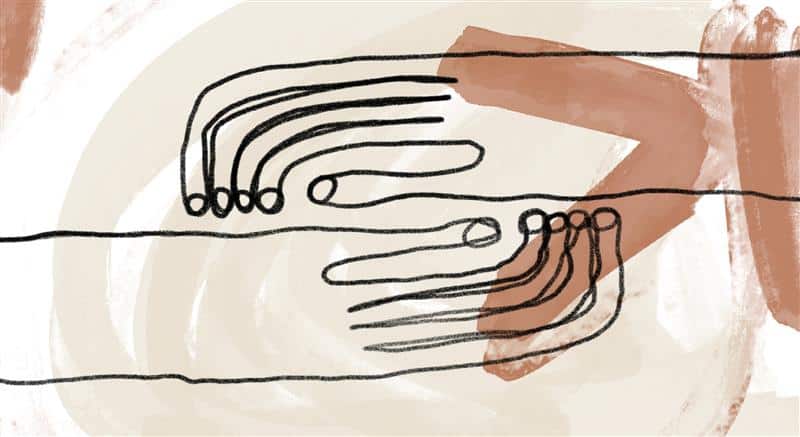
When it’s over, I want to say: all my life / I was a bride married to amazement. / I was the bridegroom, taking the world into my arms. —Mary Oliver, “When Death Comes”
For Father Richard, contemplation teaches us how to see, which deepens our capacity to be amazed.
Moments of awe and wonder are the only solid foundation for the entire religious instinct and journey. Look, for example, at the Exodus narrative: It all begins with a murderer (Moses) on the run from the law, encountering a paradoxical bush that “burns without being consumed.” Struck by awe, Moses takes off his shoes and the very earth beneath his feet becomes “holy ground” (see Exodus 3:2–6) because he has met “Being Itself” (Exodus 3:14). This narrative reveals the classic pattern, repeated in different forms in the varied lives and vocabulary of all the world’s mystics.
I must admit that we are usually blocked against being awestruck, just as we are blocked against great love and great suffering. Early-stage contemplation is largely about identifying and releasing ourselves from these blockages by recognizing the unconscious reservoir of expectations, assumptions, and beliefs in which we are already immersed. If we don’t see what is in our reservoir, we will understand all new things in the same old-patterned way—and nothing new will ever happen. A new idea held by the old self is never really a new idea, whereas even an old idea held by a new self will soon become fresh and refreshing. Contemplation actually fills our reservoir with clear, clean water that allows us to encounter experience free of our old patterns.
Here is the mistake we all make in our encounters with reality—both good and bad. We do not realize that it wasn’t the person or event right in front of us that made us angry or fearful—or excited and energized. At best, that is only partly true. If we had allowed a beautiful hot air balloon in the sky to make us happy, it was because we were already predisposed to happiness. The hot air balloon just occasioned it—and almost anything else would have done the same. How we see will largely determine what we see and whether it can give us joy or make us pull back with an emotionally stingy and resistant response. Without denying an objective outer reality, what we are able to see and are predisposed to see in the outer world is a mirror reflection of our own inner world and state of consciousness at that time. Most of the time, we just do not see at all, but rather operate on cruise control.
It seems that we humans are two-way mirrors, reflecting both inner and outer worlds. We project ourselves onto outer things and these very things also reflect back to us our own unfolding identity. Mirroring is the way that contemplatives see, subject to subject rather than subject to object.
Reference:
Adapted from Richard Rohr, Just This (Albuquerque, NM: CAC Publishing, 2017), 9–10, 12–13.
Image credit: A path from one week to the next—Madison Frambes, Untitled 4, 1, and 7 (detail), 2023, naturally dyed paper and ink, Mexico, used with permission. Click here to enlarge image.
When we are in awe, there are no deeds to be done or words to be said; a simple, ecstatic surrender.
Story from Our Community:
I was an evangelical Christian for 40 years. I became concerned that my faith community was not affirming and including all people equally and without condition. It made me step away from my church—the place I had considered to be my spiritual home for most of my life. Connecting with Fr. Rohr through his books, podcasts, and now these Daily Meditations has enriched my life and expanded my vision. It has also reacquainted me with a very precious thing: my awe and wonder at God’s creation. I believe we need a language of inclusion, and that’s what I experience in the CAC’s material. Thank you.
—Stuart B.




